RETURN TO
ROUTES
Último Refugio
del Lince Ibérico
Andújar,
Iberian Lynx Land
Historic centre declarated of cultural interest
Illustrious citizen
What to know about Andujar
Pablo Alcalde Higueras (1927-1996). Musician and poet.
"Hijo Adoptivo de la Ciudad de Andújar" (honorary title given by the town hall), creator of the musical ensemble Los Románticos, founder and director of the Rondalla de San Eufrasio, extensive teaching work in the teaching of music to several generations of children, "Romero de Honor" due to his devotion and collaboration with the Pilgrimage of the Virgen de la Cabeza, publications: La poesía de Pablo Alcalde, Junco en vuelo, and Acuarela de amor. There is a street in Andújar named after him.

Antonio Alcalá Venceslada (1883-1955). Writer and philologist.
Author of delightful compositions with Andalusian roots such as De la solera fina, La flor de la canela or Los cuentos de Maricastaña. In 1934 he published his indispensable Andalusian Vocabulary in Andujar. He was the promoter of the Monumental Rosary in the sanctuary of the Virgen de la Cabeza. He collaborated frequently in the cultural magazines of the province Don Lope de Sosa y Paisaje.


Luis Aldehuela Gómez (1920-2011). Painter and sculptor.
Son of set designer and ceramist Manuel Aldehuela. He is an outstanding authority within the hunting art. His pictorial work also includes portraits, still lifes and representations of the appearance of the Virgen de la Cabeza. Pilgrimage poster artist. In sculpture, San Antonio and the Oración en el Huerto stand out, both in Andujar.

Fray Francisco de Andújar (1760-1817). Franciscan Brother.
[Francisco de Paula Rave Berdura]
He ministered in present-day Venezuela. There he was Simón Bolívar's Mathematics teacher. He accompanied the researcher Humboldt on his visit to the Apure River, and the German scientist praised his knowledge. He held important posts within the Franciscan order while he lived in the Americas, where he died.
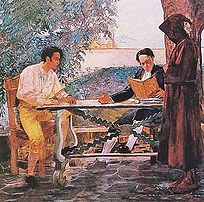
La lección de Bello a Bolívar de Tito Salas

Tomás Bevia Aranda (1907-1999). Writer.
He devoted himself to teaching, especially in the town of Ecija, where he lived for most of his life. He was a painter and musician, but above all a writer. He left innumerable poetic works such as Perlas sobre el Santuario, Violetas del Santo Reino, Visión poética de Astigi, Jaramagos, Violetas...
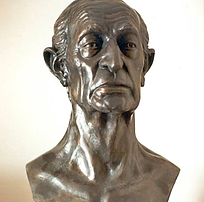
Busto del escultor Rafael Amadeo Rojas
María José Cantudo (1951). Actress.
[Mª Purificacion Josefa Cantudo Porcel]
She began her professional career as a model and actress of fotonovelas. She immediately went to the cinema and to television as a presenter. In the early seventies she performed the first full-frontal nudity of Spanish cinema (La trastienda, by Jorge Grau). She also dedicated herself to the revista, a kind of Spanish variety show, achieved the triumph with a version of Las Leandras.



Juan de Castro (1818-1892). Musicologist.
He participated with his father (who was a military musician) in the Carlist War, as a musician. He spent some time in France and returned to Spain, where he devoted himself to music criticism and history. Here he founded several magazines and published several works on the musical phenomenon, such as Manual de música religiosa and Higiene del cantante. He also wrote a few military hymns.

Manuel de Castro y Padilla (1573-1623). Jurist. Conqueror.
He was Oidor (judge) of the Audiencia de Charcos (in present-day Bolivia), the youngest jurist to hold such a post. He was later elected president and it was at that time that he was given the task of founding the city that would eventually become Oruro, which was remarkable since he was not a military man. He wrote a report on the mines of Oruro.



Carlos Ángel Gálvez
Beato Marcos Criado (1522-1569). Trinitarian religious.
[Marcos Criado Notario de Pasillas]
From a noble Andújar family, he joined the Trinitarian Order and dedicated himself to preaching the Gospel in Moorish lands. He was martyred in the village of La Peza (Granada). From that moment he gained great devotion in the area and was declared "Apostle of the Alpujarras". He was beatified by Leo XIII in 1899.

Martirio de Marcos Criado
Ventura Díaz Astillero (1821-1864). Politician.
One of the ten ministers from Jaén during the 19th century in Spain. Specifically, he occupied the Ministerio de Gobernación (Ministry of Governance) in 1857, if only for five months. He was later appointed senator for life. He represented the political tendency most opposed to liberalism at the time.



Pedro de Escavias (c.1415-20 – c.1500). Writer.
He was page in the court of King Juan II. He unconditionally supported King Enrique IV, next to the constable of Jaen, which earned Andujar the title of "Very Noble and Very Loyal". As a writer, he left several compositions in the songbooks of the time and the Repertorio de príncipes de España. He is also considered to have written the Hechos del condestable D. Miguel Lucas de Iranzo.

Manuel Espinosa de los Monteros (c.1730-1810). Musician.
First oboe of the Royal Chapel and chamber musician of the King. He was also director of the Royal Academies of Spain. He composed a piece on war music and his famous "Marcha granadera", which was the base of the marcha real and current Spanish anthem.



José Manuel Estepa Llaurens (1925). Cardinal Emeritus
With a great theological and catechetical formation, he was in charge of the university pastorate at the University of Madrid-Alcalá. In 1972 he was consecrated bishop by Cardinal Tarancón, being auxiliary bishop of Madrid-Alcalá. He held the post of military vicar general. He is currently cardinal emeritus appointed by Pope Benedict XVI. He is the author of several works, above all of a catechetical nature.
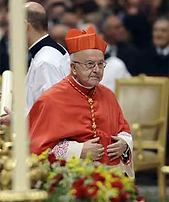

Miguel Fuentes del Olmo (1940). Sculptor.
He has dedicated his life to art and teaching. He holds a doctorate from the Complutense University of Madrid and is a university professor. He has taught at several Andalusian universities. He was awarded the gold medal of Andalusia in 2010. His sculptural work is spread across several countries.
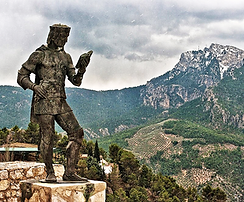
Jorge Manrique. Antonio Somoza
Rodolfo Gil Torres "Amor y Benomar" (1901-1975). Journalist and writer.
He lived most of his life in North Africa, becoming an expert on the Arab world and especially on Spain's Andalusian past. He actively collaborated in several diplomatic missions that attempted to bring the Maghreb and Spain closer together. His political thought can be classified as Andalusian nationalism and his work influenced the views of Blas Infante.


benumeya.wordpress.com

Antonio González Orea (1925-2004). Sculptor.
One of the leading figures of the new sacred art, together with Fuentes del Olmo, which emerged in Spain after the Second Vatican Council. Doctor of Fine Arts and professor in Granada. He was a professor at the SA.FA. in Andújar, from where he produced a multitude of disciples. One of his most emblematic works is the monument to the battle of Navas de Tolosa, in La Carolina.

Navas de Tolosa. Joaquín Alejandre
Pablo González Velázquez (1664-1727). Sculptor.
Addicted to the prevailing baroque style of the time, he arrived in Madrid to make a name for himself in the artistic scene. He must have enjoyed great fame as King Luis I offered him the position of sculptor to his chamber. Much of his work has been lost. The sculpture of San Luis Obispo, in the church of the same name in Madrid, has survived. He started a dynasty of artists that lasted until the 19th century.

patriciawla4


Gracián Quijano (1896-1974). Writer.
[Francisca Cristina Saenz de Tejada y Orti]
She published her first book in 1934 and from that time onwards she collaborated with the press and published a great number of works. The latter include La piedra en el lago, Ofrenda, Cante jondo, La segunda de mis siete vidas, etc. She was equally active in narrative and poetry. She was greatly influenced by Andalusian culture, but also by Eastern culture.

Bartolomé Herrera Clemente (1890-1982). Painter and potter.
One of the great ceramic masters of Andújar. He trained with the painter García del Valle and worked most of his life in the "Barrero" factory. His paintings on canvas include the missing paintings of the altarpiece of the Divina Pastora and the Cristo amarrado a la columna, in the church of San Bartolomé. His ceramic work is vast, with religious scenes everywhere, in particular: The Apparition of the Virgen de la Cabeza.


José Illanda (S. XIX). Flamenco singer.
Mythical flamenco singer of whom little biographical information is known. We can only make out that he was a gypsy and that he had to leave Andújar and went to Jerez. He lived for some time in Utrera, where he alternated with La Serneta, from whose singing he took the basis for his personal style of soleá, a style that is still present today.



Kurt Savoy (1948). Singer, specialist in whistles.
[Francisco Rodriguez Muñoz]
Also known as Curro Savoy. He is considered the best whistler in the world. His international prestige was reinforced when he collaborated in the soundtracks of famous westerns such as The Good, the Bad and the Ugly, For a Few Dollars More and A Fistful of Dollars. He has also participated in advertising campaigns and has recorded several albums.

Diego Llori Trujillo (1966). Flamenco dancer and choreographer.
He first learnt with maestro Caracolillo in Seville and Paco Romero in Madrid, where he excelled as a dancer. He was first dancer and soloist with the Spanish National Ballet. He collaborated in the creation of the first Andalusian ballet, forming his own company in 1999. His artistic collaborations are numerous. He has also appeared in films such as Carlos Saura's El amor brujo.
José Luis Macias Sampedro (1929). Painter and cartoonist.
He started out in Andújar with the master Jiménez and went to the San Carlos school of arts and crafts in Valencia. Specialising in illustration, he worked for the editorial Valenciana (Mariló magazine and covers of popular novels such as Luchadores del espacio). There he founded the publishing house Creo, where he drew the series Ajax the Greek. He also worked for the international market. He is a children's illustrator and canvas painter.
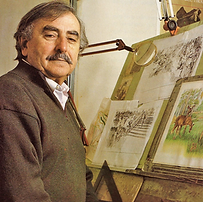


curiosidadesdeportivasporjosangper
Miguel Ángel Martínez Tajuelo (1984). Paralympic swimmer.
He is a national reference in Paralympic swimming. His track record is impressive, having won several Spanish championships and achieved meritorious positions in European and world competitions. He has also participated in Paralympic Games. He has several records and awards in recognition of his dedication to sport.

Manuel Mª Montero Moya (1826-1914). Pedagogue and writer.
Teacher in Andújar and Jaén. In 1891 he was president of the General Assembly of Teachers in Madrid. His pedagogical work is reflected in several works such as El faro de la infancia. His political views can be classified as regenerationist and republican. He was a member of Parliament in 1873 and Castelar offered him the Ministry of Public Instruction, a post he declined. He made numerous contributions to the press. He was a devoted to the Virgen de la Cabeza.
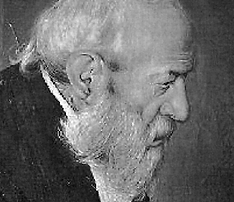

EFE/J.J. Guillén
Micaela Navarro Garzón (1956). Politician.
PSOE member. Former councillor on Andújar Town Hall. Senator for the province of Jaén (1996-2000). Member of Parliament in the 2000 and 2015 elections. Minister of Equality and Social Welfare of the Andalusian Regional Government for two terms of office. In 2014 she was elected President of the PSOE, until 2016. Second Vice-President of the Congress of Deputies since January 2016.

Maria Rosa Orad Aragon "Maria Rosa" (1937). Flamenco dancer.
She spent her childhood in Seville where she received her initial training. She appeared for the first time in the show "Galas juveniles". She trained on stages in Spain and Italy. She was part of Concha Piquer's company. She teamed up with Caracolillo, dancing in Europe and America. She has received many awards and recognitions.

Francisco Pérez de Valenzuela (1528-1599). Conqueror.
From a noble family from Andújar, he went to America to join his father. He dedicated himself to trade with his own ships. He formed his own army, which he served the King. He took part in the battle of Biobío. He lived in the city of Valdivia (Chile), where he was mayor, corregidor and royal accountant. He was the brother of Juan de Valenzuela, founder of Concepción.



Antonio Primo Garrote (1732-1798). Sculptor.
One of the first disciples of the San Fernando Academy in Madrid. He perfected his art in Rome and worked in Madrid for the rest of his life. The reliefs on the façade of the Casa de Correos, now the headquarters of the Comunidad de Madrid, and the top of the Fuente de la Alcachofa in the Retiro Park have been preserved to this day.

Fray Agustín de Quirós (1566-1622). Jesuit writer.
He taught Grammar, Humanities and Sacred Scripture. He directed several Jesuit schools. He moved to Mexico where he was censor in some convents. He wrote several works, including Breve discurso contra el abuso de afectar vocablos antiguos y desusados, and Comentarios de varios libros del Antiguo Testamento.

Jesuitas Granada. Nunilon
María de Rada (S. XVII). Poet.
A curious and fortunate example of a woman dedicated to literature in the midst of the Spanish Baroque. We know little about her, only the publication of some of her poetry in the Cancionero Antequerano, to which she seems to be connected due to the style of her compositions. She also published in Andújar, in works sponsored by the writer Francisco del Villar.

Rafael Romero Romero "El Gallina" (1910-1991).
Flamenco singer.
One of the mainstays of 20th century flamenco singing. He was part of Lola Flores' show in 1942. He performed with the greatest artists of the time and took part in some films. He worked at the tablao Zambra. He travelled around the world with his art, being especially welcomed in Japan. He won the Premio Nacional del Cante in 1973.

Irma Soriano (1883-1955). (1963). Journalist.
[Inmaculada Soriano Bolivar]
She started out on the radio, moving from Radio Jaén to Radio Madrid, with Iñaki Gabilondo in 1984. The following year she joined the TVE news services. In 1987 she received the definitive accolade when she was chosen by Jesús Hermida for his morning show "Por la mañana". She has participated in several television and radio programmes. She received the Antena de Oro award on two occasions.
Francisco Terrones del Caño (1551-1613). Real preacher.
With a great theological training, he was bishop of Tuy and León, and major abbot of Aracena. His relationship with the court came from his position as preacher-confessor to King Felipe II. Thanks to this relationship, he obtained a relic of St. Euphrasius for Andújar. He wrote several sermons and his fundamental Instrucción de predicadores, a manual for sacred orators.
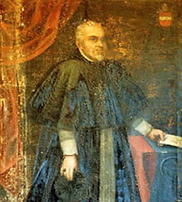


Jose Toral y Sagrista (1874-1935). Writer.
He studied in Madrid and went to the Philippines with his brothers, studying law at the University of Manila. On his return to Spain he worked on several newspapers and became a notary by public examination. In his love of literature, he left several works such as Odres viejos, Para el descanso, El ajusticiado, Poemas en prosa, Los tres dones del diablo and Cuentos del cielo. He alternated between prose and poetry.

Manuel de Valenzuela Sanchez-Muñoz (1857-1909). Writer.
Dedicated to law, he found in literature a source of leisure. As a poet, he wrote Sendas de luz and Sinceridad. As a novelist, he wrote El verdadero amor, which takes place in Andújar. He also wrote several contributions for magazines of the time. He is the author of one of the poems of the Monumental Rosary of the Virgen de la Cabeza and lyricist of the song "Al cerro subimos". His son was the famous lieutenant colonel Valenzuela.





















